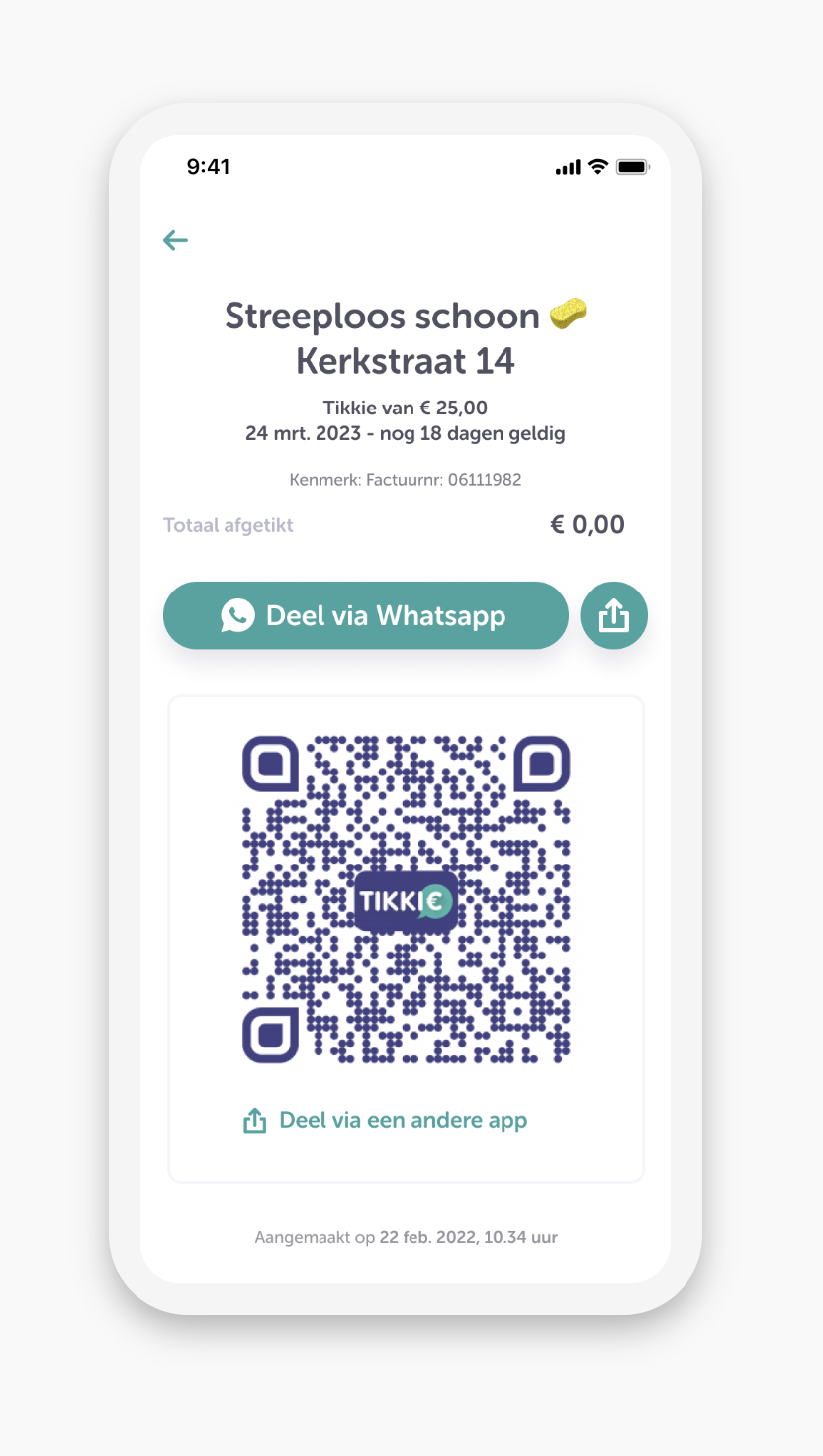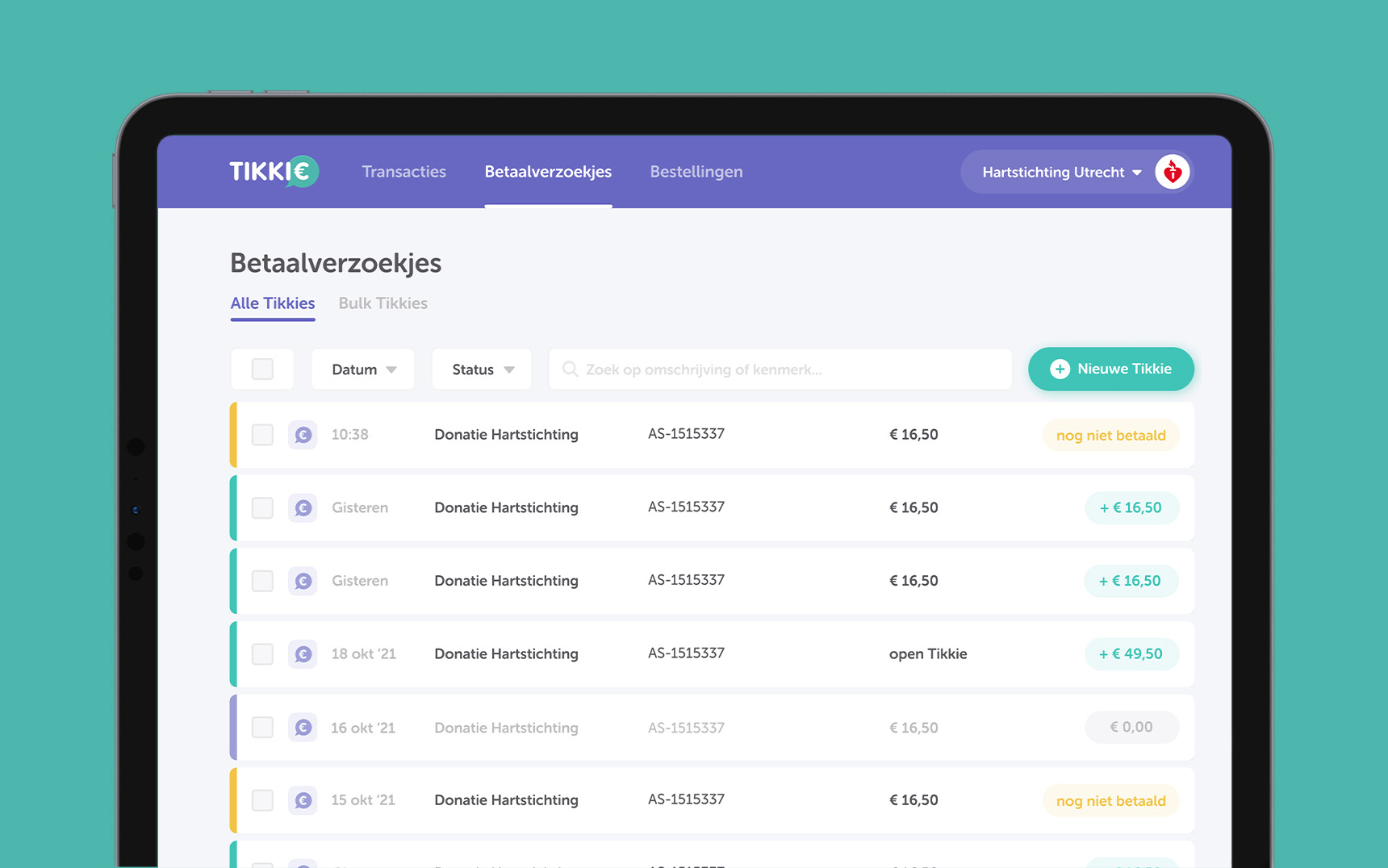Tikkie (ABN Amro) - 6 Million Users
Improve B2B Sales Experience at Tikkie Through a Scalable Ecosystem
Introduction:
This case study delves into a pivotal role I undertook at Tikkie, where I embarked on the mission of establishing a robust B2B ecosystem. This ecosystem was designed to enable seamless sales management for users, including shop owners and financial employees. The undertaking presented a dynamic challenge, as it required catering to a diverse range of users while ensuring scalability and simplicity, all while aligning with Tikkie's user-friendly ethos.





Challenge:
The challenge at Tikkie was multifaceted—designing a B2B ecosystem that could accommodate a variety of users, including shop owners and financial employees. With over 4 million users in the Tikkie ecosystem and the B2B segment rapidly gaining momentum, the primary challenge was crafting a system that was both scalable and user-friendly. The central question revolved around how to cater to a diverse set of user needs while maintaining Tikkie's hallmark simplicity.
Solution:
The solution lay in crafting a multifunctional and scalable B2B ecosystem that seamlessly integrated into Tikkie's overarching framework. The approach focused on creating distinct yet interconnected modules that catered to the specific needs of different user personas. The ecosystem would empower users to manage their sales efficiently while upholding Tikkie's commitment to simplicity.
Approach:
User Persona Identification: The journey commenced with a meticulous analysis of Tikkie's user base. This step was crucial in understanding the diverse set of users within the B2B context, including shop owners and financial employees.
Scalable Modular Design: Recognizing the need for scalability, the design approach involved creating modular components that could be customized to suit the unique requirements of each user persona. These modules seamlessly integrated into the existing Tikkie ecosystem, ensuring consistency and coherence.
User-Centric Simplicity: The design philosophy aligned with Tikkie's simplicity-driven approach. The goal was to ensure that despite the complexity of user requirements, the ecosystem remained user-friendly and intuitive.
Outcome:
The outcome was an ecosystem that harmoniously united diverse user needs within the B2B domain while adhering to Tikkie's user-friendly ethos. The scalable design allowed the ecosystem to cater to Tikkie's expanding user base effectively, offering a tailored experience for shop owners and financial employees alike.
Conclusion:
This case study highlights the power of strategic design in addressing complex challenges while adhering to an organization's core values. The creation of a scalable B2B ecosystem within Tikkie's framework demonstrated the importance of understanding user personas, designing modular components, and upholding simplicity. The success of this endeavor underscored the potential of user-centric design solutions in driving business growth and user engagement.
Activities:
• User Persona Analysis and Identification
• Scalable Modular Design Creation
• User-Centric Interface Design
• Integration into Existing Ecosystem
• User Testing and Validation
Link
tikkie.me
